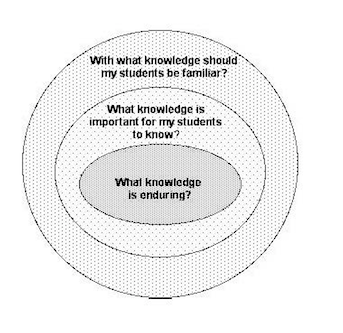Understanding By Design
![]() Teaching Resources
Teaching Resources
Categories No category assigned!
grades:
-
One curriculum model used within many classrooms is known as "backward design," as outlined in the book Understanding by Design (UbD) by Wiggins and McTighe and published by the Association for Supervision and Curriculum Development (ASCD). This approach is designed so that student learning will go beyond the specific classroom activities and will reach a deeper enduring understanding, establishing the basis for later Jewish learningand living. Below are some useful definitions and terms to help you better understand how this curriculum is structured.
Backward design - A process to designing a curriculum or unit by beginning with the end in mind and designing toward that end. Why is such a view backward when it seems logical? Many teachers begin their unit design with textbooks, favored lessons, and time-honored activities rather than deriving it from targeted goals or standards. In backward design, one starts with the end - the desired results - and then identifies the evidence necessary to determine that the results have been achieved - the assessments. With the results and assessments clearly specified, one can determine the necessary (enabling) knowledge and skill, and then the teaching needed to equip students to perform.
Big ideas - The core concepts, principles, theories, and processes that should serve as the focal point of curriculums, instruction, and assessment. Big ideas are important, enduring, and transferable beyond the scope of a particular unit. An example of a big idea is: Thriving organisms adapt to harsh environments.
Enduring understandings - The important ideas or core processes that have lasting value beyond the classroom. Such understandings are generally abstract in nature, so they require uncoverage through sustained inquiry. To determine enduring understandings for a unit or course, teachers are encouraged to ask, What do we want students to understand and be able to use several years from now, after they have forgotten the details?
value beyond the classroom. Such understandings are generally abstract in nature, so they require uncoverage through sustained inquiry. To determine enduring understandings for a unit or course, teachers are encouraged to ask, What do we want students to understand and be able to use several years from now, after they have forgotten the details?
Essential question - A provocative question designed to engage student interest and guide inquiry into the important ideas in a field of study. Rather than yielding pat answers, essential questions are intended to stimulate discussion and rethinking over time. There are two types of essential questions: overarching and topical.
Learning objective - A learning objective is an outcome statement that captures specifically what knowledge, skills, attitudes learners should be able to exhibit following instruction.
Evidence of understanding - evidence of understanding comes from the students themselves. Understanding is about making meaning of facts and transferring knowledge to other problems, tasks, and domains. The evidence comes from the assessment of student work: homework, worksheets, tests, projects, etc.
For further information and examples: http://www.ascd.org